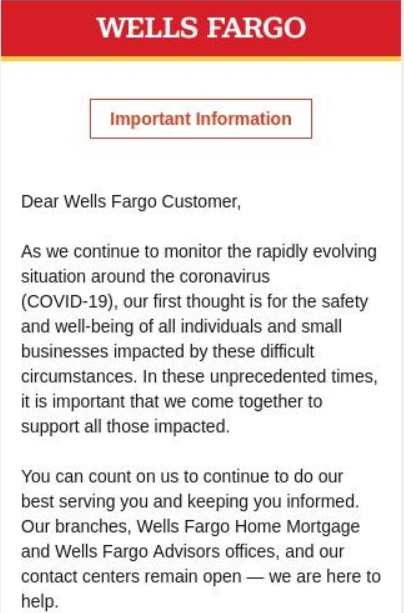Email marketing lessons to be learned during the COVID-19 outbreak
Reassurance and vague pledges of support are only effective at the outset. As customers are increasingly affected by COVID-19 in specific ways, they want direct guidance and details.
As consumers feel the impacts of COVID-19 in real and defined ways, banks are missing an opportunity to provide specific and relevant support.
Customers want details
Initial COVID-19 emails gave assurance about their bank, and pledged assistance to affected customers, albeit vaguely. Content marketing posts on CNBC Select offer specific details on how credit card issuers are providing assistance to affected customers. While a boost for awareness, positive brand sentiment, and online search results, customers should have an opportunity to learn of specific ways they might be helped from their bank directly, rather than learning about it from a third-party. Ally’s email listing its emergency measures in detail illustrates a best practice.
Provide useful guidance
Capital One proactively alerted customers that customer service wait times could be lengthy, routing them to digital options. The emails also included embedded videos to help unfamiliar users download and use those tools. Given customers are anxious about a broad range of concerns, unless an email provides useful information or solves one of those concerns, recipients will ignore them and prioritize something that will.
Highlight how you’re helping
Faced with mounting anxiety about the future, consumers not only want to see their immediate problems addressed but also see efforts towards solving the core problem: the spread of the virus. Banks that can highlight ways in which they are supporting local communities, impacted customers, and ways they are supporting workers “on the front line,” as Chase has done with bonuses to branch employees, and as Ally detailed in its communication. People are wanting for positive stories that demonstrate empathy, however small.
COVID-19 email communications
A few stand-out examples aside, banks sent text-rich communications to customers, providing assurance, vaguely pledging assistance to affected customers, and guiding them towards digital tools for account management and customer support.
Ally
Ally exhibits best practices in providing specific details regarding its customer assistance measures within the subject line. The email was sent to two different lists over two days and earned significantly above-average read rates on both sends.
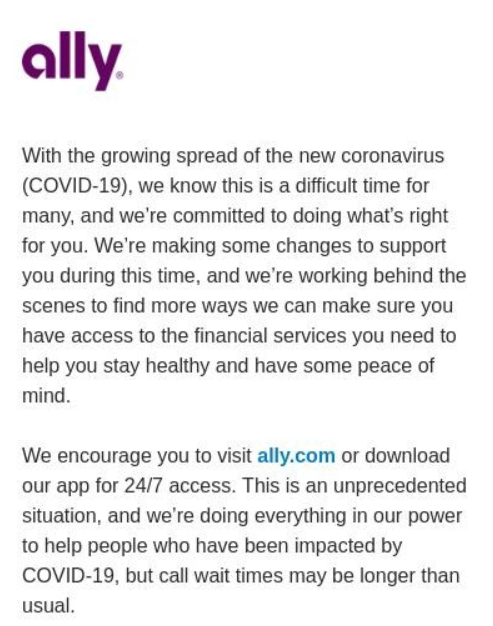
Early communications from Capital One and Bank of America earned high read rates, as the subject lines addressed customers directly, and emphasized the information’s importance.
Capital One
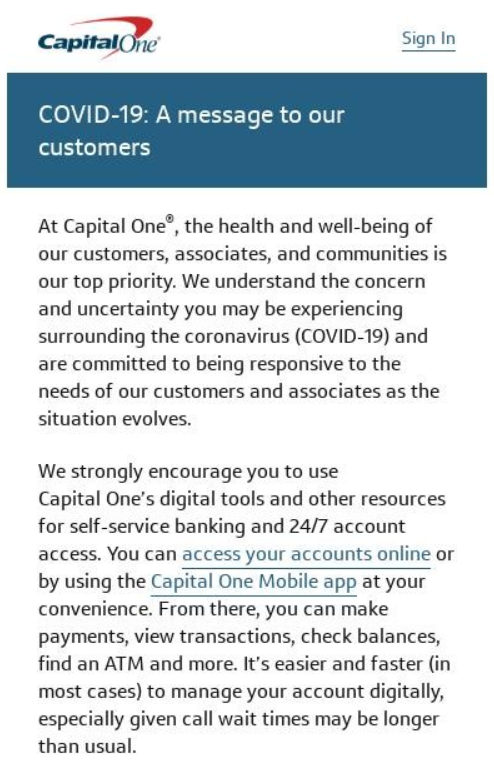
Bank of America
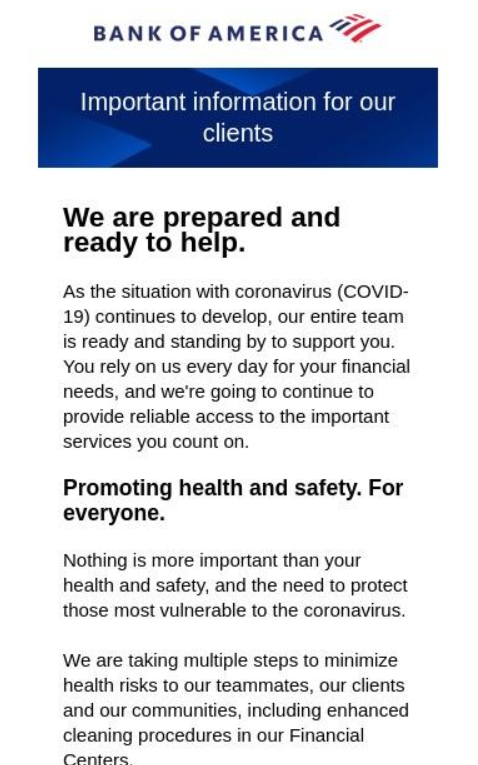
Chase and Wells Fargo reminded customers that they could “stay connected” with digital banking services and reassured customers of continuity of service and support.
Chase
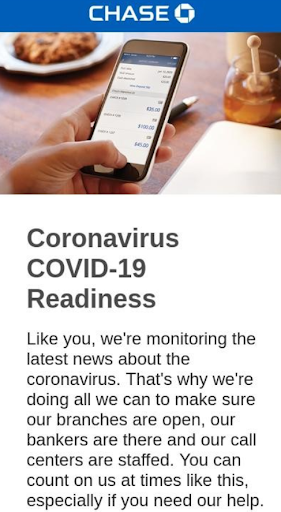
Wells Fargo
